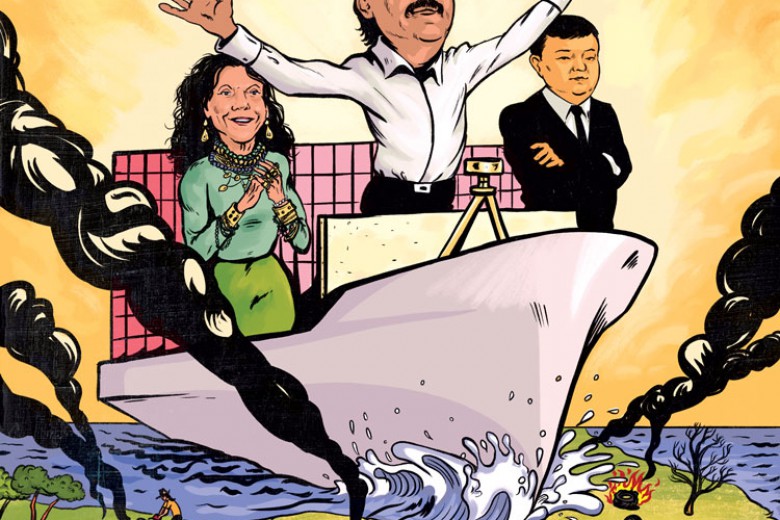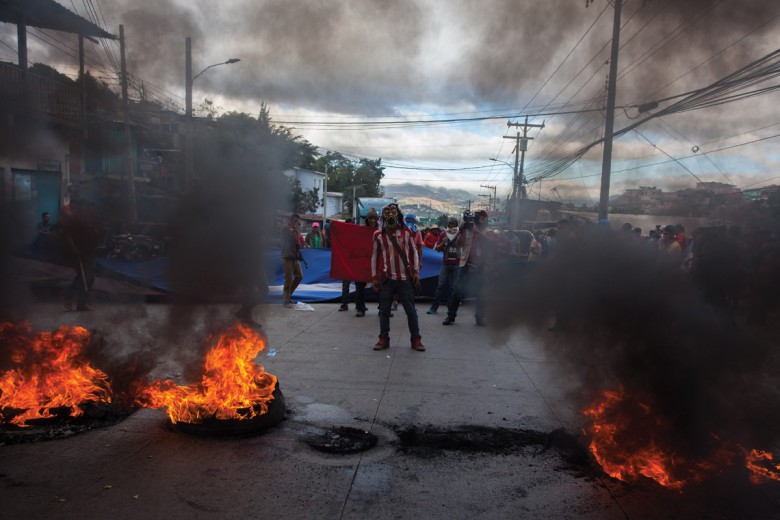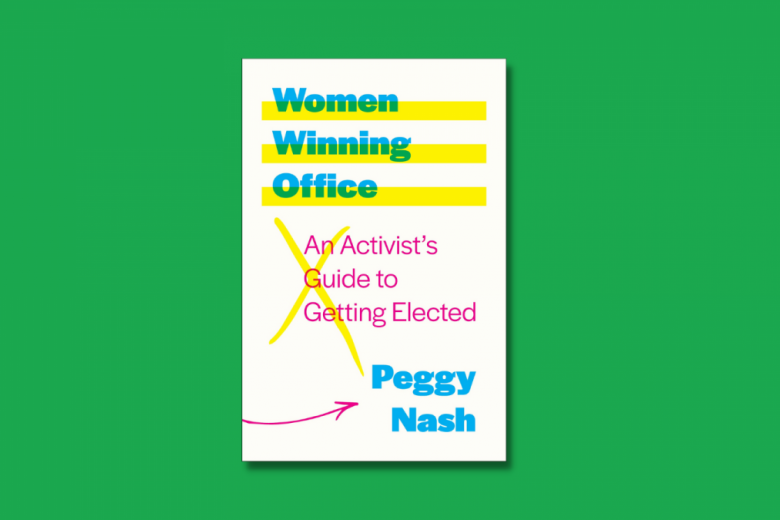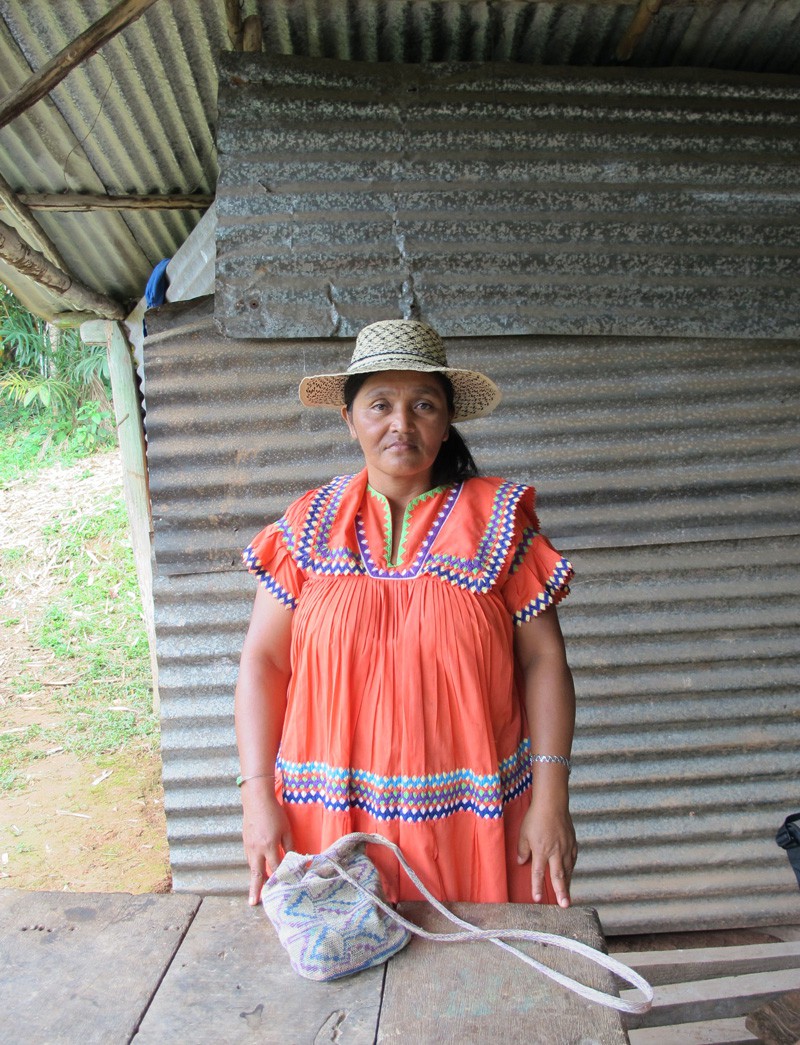
In 2011, Silvia Carrera made history by being the first Ngäbe woman elected as the cacica (chief) of the Ngäbe-Buglé Comarca in Panama. Politically equivalent to a semi-autonomous province, a comarca enjoys its own system of laws and governance. Encompassing 6,968 square kilometres of remote mountainous terrain, the Ngäbe-Buglé Comarca in western Panama is home to some 150,000 people.
Prior to being elected, Carrera spent months traversing the region’s rugged highland trails. Dressed in her nagua (a traditional Ngäbe dress) and wearing only sandals on her feet, she walked from village to village, speaking with the people and listening to their concerns about the future. Opposing corporate exploitation of the comarca’s natural resources, the following year, in February 2012, Carrera boldly derailed the government’s plans to open up the comarca to mining. For many in Panama, she is the face of Indigenous resistance.
Carrera met with me outside her family’s home in Ojo de Agua, a small community of dispersed households and farms. Surrounded by family members, mainly young women and girls, their colourful naguas gently blowing in the afternoon breeze, the smell of a wood fire drifting through the air, she spoke about the emerging role of Indigenous women in leadership.
“There has been a national and international movement to create opportunities for women to become involved in leadership,” she said. “Women around the world are fighting to have more opportunities. Things are changing. Ngäbe women are representing their people, and I hope that, in the future, a Ngäbe woman can become a president of Panama.”
A few kilometres from Carrera’s home, the international Pan-American highway runs west toward the border with Costa Rica, the site of periodic clashes between Panama’s police force and Indigenous protesters. In early 2012, Ngäbe protests blocked the highway at several points, demanding that the government honour its promise to protect the comarca from mining and hydroelectric development. Witnesses say that police fired tear gas and live ammunition into the crowd to break up the blockades. Three young men were killed. A fair and independent investigation into police actions that day, promised as part of last year’s signed peace accords, has yet to be completed.
The movement continues to grow: this year, in January 2013, Carrera forged a broad political alliance of campesinos (farmers), educators, civil rights organizations, and Indigenous groups. Known as The Strategic Alliance, it is demanding that the government finally fulfil its agreed obligations.
Standing up to President Ricardo Martinelli, a man described in a leaked U.S. diplomatic cable as having “autocratic tendencies,” Carrera has emerged as a national figure of resistance. In person, she is poised and unassuming. Full of quiet determination, she learned to read and write despite a lack of formal schooling. Currently, she is striving to improve health and education services across the comarca and sees nothing unusual about her work: “Resistance is something that Indigenous women have been doing for many years.”
LEANNE SIMPSON AGREES. Indigenous women form a resistance movement that predates Canada, said Simpson, who teaches Indigenous studies at the Centre for World Indigenous Knowledge and Research at Athabasca University. Simpson, a member of the Alderville First Nation in Canada, is a fierce advocate of Indigenous peoples’ rights, having written and lectured extensively on issues of Indigenous governance, land rights, and cultural resurgence.
“Indigenous women have resisted colonialism in every way possible,” she said, “from defending our land in direct action . . . to educating our children so they have a sense of who they are and they know their history and their responsibilities.”

She said that this strength needs to be acknowledged because, currently, “it is absolutely unrecognized and unseen.” Simpson said that this was partly because the work that Indigenous women do to maintain resistance is often unglamorous. “We are getting up at 6 o’clock in the morning, and we’re feeding our children, we’re breastfeeding all through the night, we’re doing things that women have to do to make the lives of our children and our families progress.”
Women are a vital part of Indigenous resistance movements, said Simpson, explaining that she would like more value placed on the hours and hours of resistance that women put into creating better lives for their families and their nations.
ROSE CUNNINGHAM, a Miskito woman from Nicaragua’s remote North Atlantic Autonomous Region, is another woman who has spent years dedicated to building stronger and healthier communities. Cunningham founded the grassroots organization WangkyiTangni (flower of the river) some 30 years ago. The organization assists local communities that are struggling with poverty and food insecurity. The North Atlantic Autonomous Region, although rich in biodiversity and culture, is also affected by both climate change and drug trafficking.
Many of the communities that Wangki Tangni serves are perched along the banks of the Wangki, which means river in Miskito and is also known by its Spanish name, Rio Coco. The river, the lifeblood of the communities, snakes eastward from Nicaragua’s northern highlands, merging with the Honduran border and finally emptying into the Caribbean Sea.
-Elizabeth--Rappaport_800_533_90.jpg)
Cunningham has established several programs that support Indigenous self-governance, preserve traditional values and local biodiversity, and create food security. In 2012, Cunningham won the Women’s World Summit Foundation’s prize for Women’s Creativity in Rural Life, and her pioneering work to end domestic violence is widely acclaimed.
Across the Americas, domestic violence is widespread, remaining a significant health risk to Indigenous women, and women like Cunningham are using creative ways to challenge it. In an interview, Cunningham explained that Wangki Tangni works with the whole community to address this violence. The organization provides community training on subjects such as human rights, sexual health, violence against women, and sustainable farming. Dedicated to the preservation of Miskito culture, Wangki Tangni has created innovative programs that combine anti-violence education with strategies that maintain important Miskito traditions.
One program uses a process of community dialogues to instil values of anti-violence, with Miskito Elders sharing traditional oral stories with their communities, teaching gender equality while imparting vital cultural knowledge. Wangki Tangni’s anti-violence programs work by drawing a direct correlation between Miskito peoples’ right to self-determination and a woman’s right to her own body.
“We have the autonomous land law, property law of Indigenous people, and we have rights over our natural resources, so women want to be the face of political decisions over our resources, over our own lives, and over our own bodies,” Cunningham said.
WANGKI TANGNI IS NOT alone in this work of restoring education and facilitating cultural renewal. The Navajo Women Peacemakers, for instance, use oral storytelling to interweave themes of political sovereignty, gender equality, and anti-violence. Sacred Circle, a shelter and advocacy program for Indigenous women, parallels a tribal nation’s inherent right to land, resources, self-governance, and cultural identity with a Native woman’s inherent right to self-determination in its literature, From the Roots Up.
The high rate of violence against Indigenous women, according to many, is rooted in colonialism. Scholars like Sarah Deer, Andrea Smith, and the late Paula Gunn Allen (a respected Native American poet and activist) have written that in pre-colonial societies in North America women held important, key positions. They contend that violence against women was uncommon and that the process of colonization eroded traditional values and brought gender inequality to Indigenous communities.

Eriel Deranger, a young Dëne Sųłiné woman from northern Alberta, sees this pre-contact legacy as a model for the future. Talking about the impact of colonization upon Indigenous women in Canada, she said, “a lot of [communities] were matriarchal or had very even-keeled structures of governance that were basically torn apart, ripped out. They were force-fed these colonial structures that really disempowered women as contributing members of society.”
Deranger is the communications officer for her community, the Athabasca Chipewyan First Nation, whose homelands encompass the remote boreal forests and muskeg of northern Alberta, where the Athabasca River winds its way through Chipewyan territory. The Athabasca Chipewyan First Nation is currently fighting Shell’s plans to develop another tarsands mine close to the existing Jackpine mine on the east side of the Athabasca river. According to the Athabasca Chipewyan First Nation, the expansion would spoil thousands of acres of land and ruin 13 miles of the river. Deranger explained that this will affect her nation’s ability to hunt, fish, and trap – a breach of their treaty rights. Deranger is leading a campaign to gain broader support for her nation’s fierce opposition to the tarsands expansion.
She discussed the impacts of the tarsands project upon the women in her community. With rates of breast cancer and other soft tissue cancers in women on the rise, she said that women in the community often feel torn between wanting to stay in their communities and wanting to leave because they are afraid for the health of their families.
“Women often bear some the most adverse impacts [of development] because we are the life-givers of the next generation. We need healthy environments in order to raise our children and ensure their health. We’re deeply connected to intact ecosystems and biodiversity and even the longevity of our cultures and who we are as peoples,” she said.
The destruction of Chipewyan land is like “someone ripping a part of who you are out of you. As Dëne Sųłiné women, people, we are the Delta, the river, the muskeg, the bears, the caribou, the bison, the peppermint, the rosebuds, all of it. When you destroy that, you are destroying who we are.”
Deranger credits the women in her family for her strength and spirit. She said her 96-year-old grandmother and her mother were the strongest women she knew. Women, she said, “are the backbone to our families, our communities.”
WAZIYATAWIN is a Dakota woman from Pezihutazizi Otunwe (Yellow Medicine Village) in southwestern Minnesota. A scholar and activist, she currently holds the Indigenous Peoples’ Research Chair in the Indigenous governance program at the University of Victoria in British Columbia. Her work focuses on decolonization strategies for Indigenous communities, and she is the founder of Oyate Nipi Kte, a grassroots organization dedicated to the recovery of traditional Dakota knowledge.
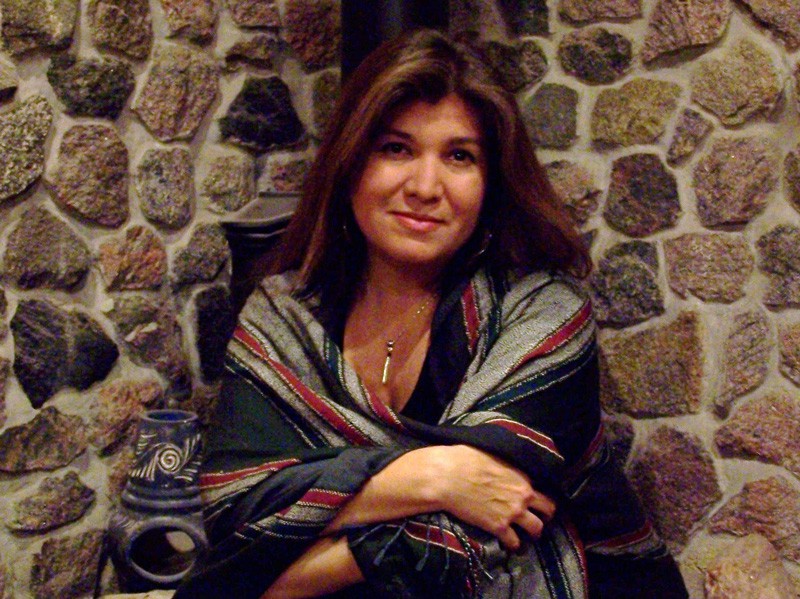
In an interview, Waziyatawin discussed the significance of Indigenous women’s leadership, saying that it is something we will be seeing a lot more of.
“It’s time for Indigenous women to resume our role as fundamental caretakers of our families, our communities, our lands. I think about women in my family, the role they are taking up. It’s the role of a mother bear, of that fierce undying love and commitment to defending future generations, defending the little ones,” she said.
Across the Americas, and around the globe, Indigenous women are working to restore values of harmony, co-operation, balance, and respect within their communities. They are on the front lines, defending their land, their nations, and life itself from continued acts of colonization. Their resistance is fundamental, not only to the well-being of their communities but to the health of all ecosystems. We could all learn from their example.


